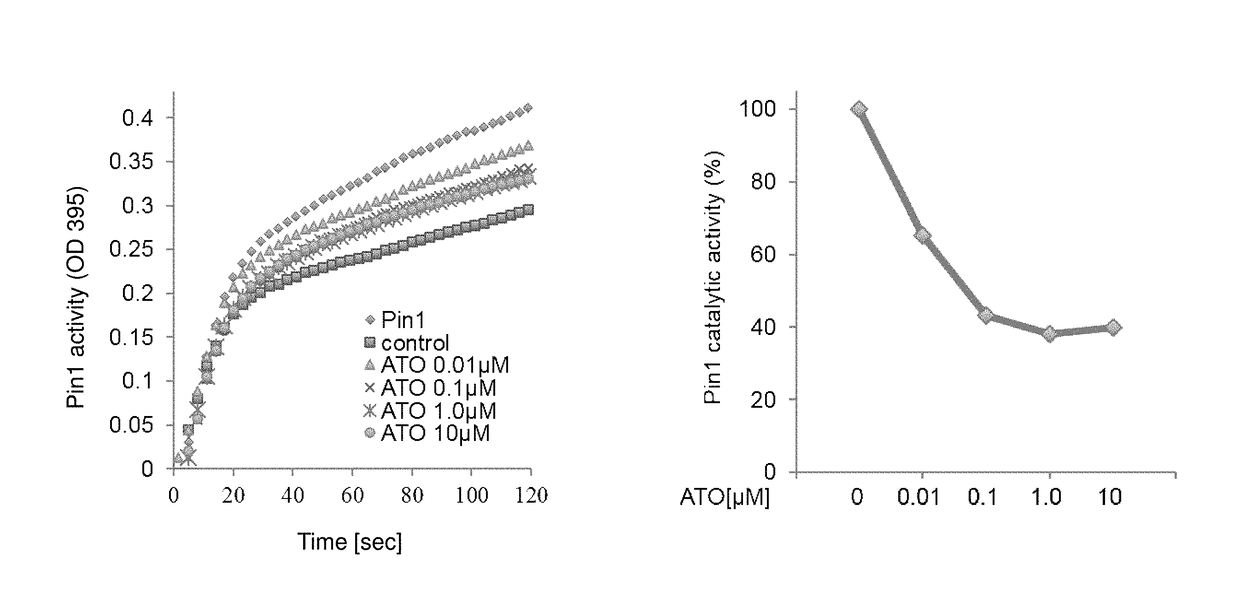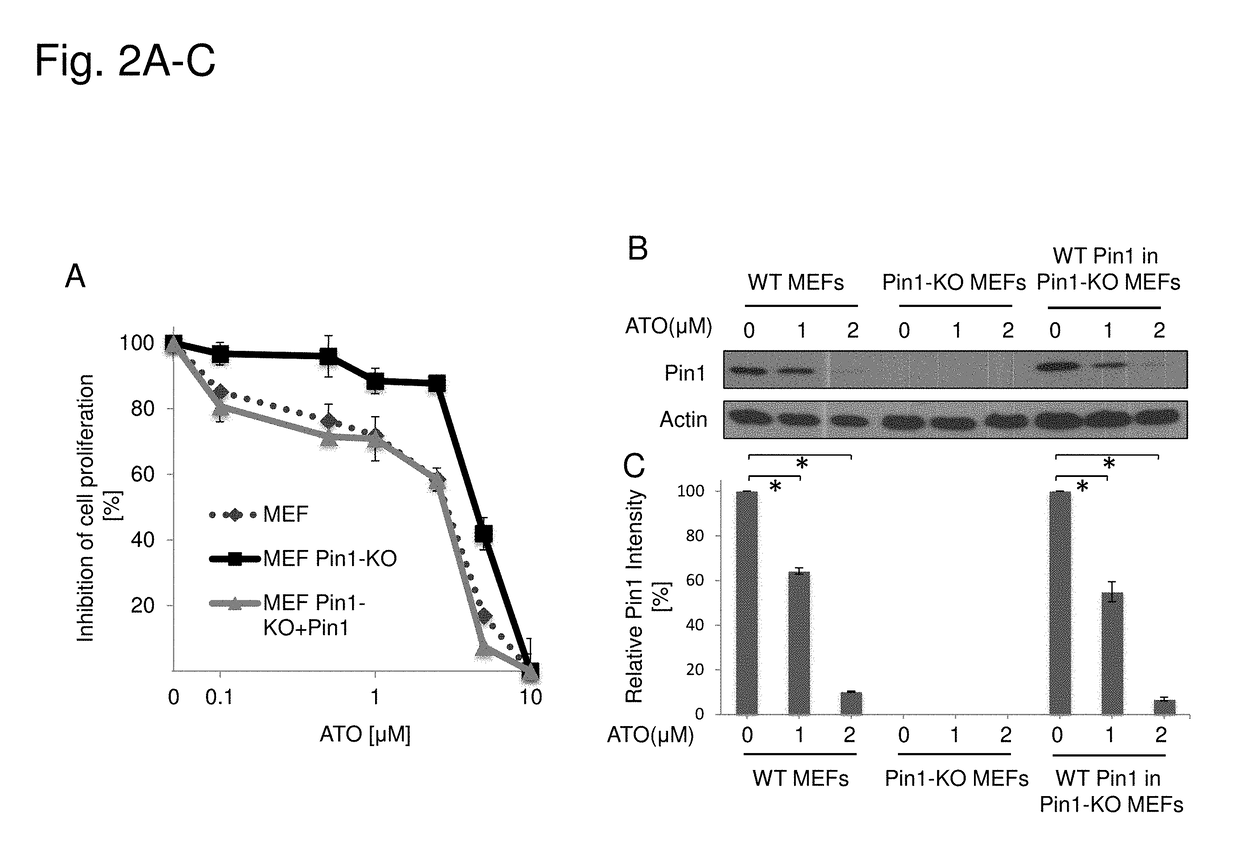Arsenic trioxide for treatment of pin1-associated disorders
- Summary
- Abstract
- Description
- Claims
- Application Information
AI Technical Summary
Benefits of technology
Problems solved by technology
Method used
Image
Examples
example 1
ATO Inhibits Pin1 Activity in a Dose-Dependent Manner
[0218]Recombinant Pin1 was incubated in vitro with increasing concentrations of arsenic trioxide (ATO). Dose-responsive inhibition of Pin1 activity (e.g., Pin1 enzymatic activity) was observed with increasing concentrations of arsenic trioxide (FIG. 1).
[0219]Pin1 activity (e.g., Pin1 enzymatic activity) was determined by a chymotrypsin-coupled PPIase assay. Chymotrypsin cleaves only the trans form of the Xaa-Pro bond in a model peptide, such as N-succinyl-Ala-Glu-Pro-Phe-p-nitroanilide. In aqueous solution, approximately 90% of the Xaa-Pro bond of this molecule is in trans-conformation. After addition of an excess amount of chymotrypsin, the trans form of Xaa-Pro bond is rapidly cleaved. The rate of hydrolysis of the remaining 10% Xaa-Pro bond is limited by its rate of cis-to-trans isomerization (e.g., Pin1 activity). Therefore, Pin1 activity is measured by the rate of release of p-nitroanilide by spectrophotometry.
example 2
ATO Inhibits Cell Growth and Induces Pin1 Protein Degradation in a Dose-Dependent Manner in MEFs
[0220]Three populations of mouse embryonic fibroblast cells (MEFs) including, wild-type (WT), Pin1 knockout (Pin1-KO), or Pin1 knockout reconstituted with Pin1 (WT Pin1 in Pin1-KO) were treated with different concentrations of ATO. Cell growth was assayed by counting cell number (FIG. 2A), and Pin1 protein expression levels were determined by immunoblotting (FIG. 2B), with quantification of corresponding Pin1 protein levels (FIG. 2C). The Pin1-KO population was more resistant to inhibition of cellular proliferation as compared to WT cells. Reintroduction of WT Pin1 (WT Pin1 in Pin1-KO) rescued sensitivity to treatment with ATO.
[0221]The effect of ATO on Pin1 mRNA levels in MEFs was also determined (FIG. 3). WT MEFs were treated with different concentrations of ATO, followed by assaying Pin1 mRNA levels using realtime PCR. ATO did not affect Pin1 mRNA levels in MEFs.
example 3
Proteasome Inhibitor, MG-132, Inhibits ATO-Induced Pin1 Degradation in MEFs
[0222]WT MEFs were treated with increasing concentrations of ATO in the presence of the proteasome inhibitor MG132 or vehicle control DMSO. MEF cells were collected and lysed and levels of Pin1 protein expression were quantified by immunoblotting. The ability of ATO to induce Pin1 degradation was fully rescued by inhibition of the proteasome pathway using proteasome inhibitor, MG132, in MEFs (FIG. 4).
PUM
| Property | Measurement | Unit |
|---|---|---|
| Dimensionless property | aaaaa | aaaaa |
| Dimensionless property | aaaaa | aaaaa |
| Dimensionless property | aaaaa | aaaaa |
Abstract
Description
Claims
Application Information
 Login to View More
Login to View More - R&D
- Intellectual Property
- Life Sciences
- Materials
- Tech Scout
- Unparalleled Data Quality
- Higher Quality Content
- 60% Fewer Hallucinations
Browse by: Latest US Patents, China's latest patents, Technical Efficacy Thesaurus, Application Domain, Technology Topic, Popular Technical Reports.
© 2025 PatSnap. All rights reserved.Legal|Privacy policy|Modern Slavery Act Transparency Statement|Sitemap|About US| Contact US: help@patsnap.com



